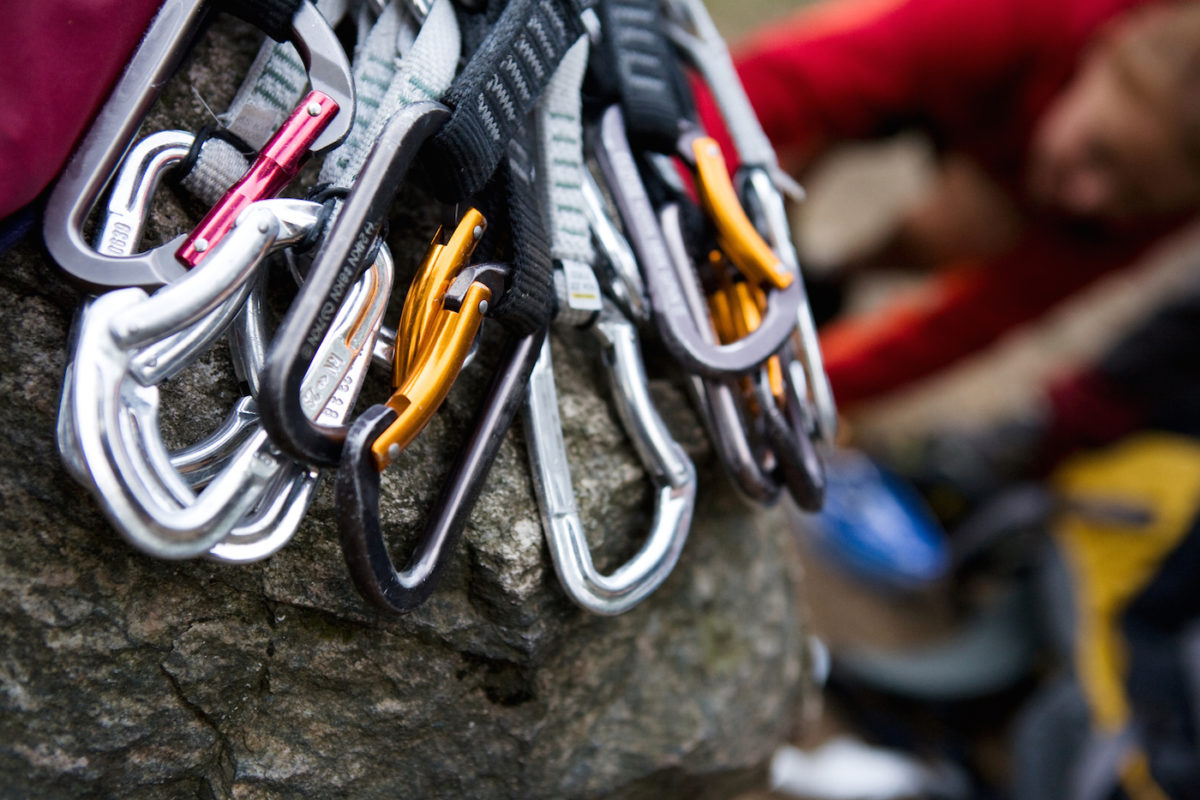When you are searching for quickdraws, You’ve Got three Chief factors:
Additional concerns: Subtler quickdraw attributes like carabiner dimensions and contour, sling width, sling material, strength and weight may also be significant, particularly as you are more experienced.
By way of instance, a quickdraw with miniature wiregate carabiners and a flimsy Twist will hardly weigh anything, helping keep your equipment rack nimble and light. However this kind of quickdraw are also more difficult to clip compared to a heavier one with big carabiners and a rigid sling.
Characteristics which produce a quickdraw good for a single kind of scaling may not make it great for another. This superlight quickdraw may be amazing for multi-pitch experiences where every gram counts, but not so amazing on a single-pitch sport rise in the crag, where weight is a lesser priority.
Since each quickdraw includes two carabiners onto it, a quickdraw might have a blend of straight, bent or wiregate carabiners.
Straight-gate carabiners: Frequent on a lot of quickdraws, these carabiners have strong straight gates which are simple to operate. As its name suggests, directly gates are flawlessly straight in the pivot point to the conclusion.
Bent-gate carabiners: These include a concave gate which makes cutting a rope fast and simple, and because of this they are reserved just for the rope-end of quickdraws.
A few directly – and – bent-gate carabiners will also be keylock carabiners. This retains the carabiner from slipping and grabbing in your harness equipment loop, bolt hangers as well as other slings, some of which can be very annoying. You will probably pay a bit extra for this feature, however it is a wonderful update.
The cable loop generates its spring mechanism because it hastens, decreasing general weight and eliminating the need for additional parts found in gates.
An advantage of this very low mass of the wiregate is the fact that it’s less probable that the gate will vibrate open through a fall compared to a good gate. This momentary opening brought on by inertia or an accident with another object is known as gate lash also it can lessen the carabiner general power to its open-gate strength. Wiregates will also be less likely than strong gates to freeze in cold temperatures, therefore in case you ice climb or mountaineer, you will likely prefer them.
By design, wiregate carabiners can’t possess the keylock feature that a few directly – or bent-gate carabiners have. But some wiregates possess”hooded” noses which stop them from snagging on equipment, like the keylock nose.
The next thing many climbers think about when choosing out quickdraws is the period of the sling (sometimes known as a dogbone). Longer slings are more capable of lowering rope drag, but they are also lighter and thicker.
Sport climbers frequently buy pre-made quickdraws which are accessible with different-length slings:
17 — 18cm slings: All these medium-length slings are helpful for reducing rope drag, particularly when the course is over 12 quickdraws lengthy or when the rope isn’t traveling in a direct path.
Sport climbers find it beneficial to have a collection of short- and – medium-length quickdraws in their harness so that they’re prepared for whatever the path has in store.
Trad climbers frequently make their particular quickdraws instead of purchasing pre-made ones. You can achieve it by carrying a 60cm or more sewn sling and clipping two carabiners of your pick into the match. Climbers predict these alpine quickdraws or extendable quickdraws (“extendable” describes a method for racking the quickdraw so the sling may be shortened and then stretched if necessary.
The amount of quickdraws you require will change based upon what, where and how long the scale will be. Here are some hints:
- Most game paths can be directed with 12 quickdraws, therefore this is a fantastic beginning.
- Longer sport routes (over 30m long) need 16 to 18 quickdraws
- Exceptionally long paths require 24 or longer quickdraws
- Routes necessitating a 70m rope or more need over 12 quickdraws.
- When a guidebook lists the amount bolts on a path, that is also your quickdraw complete.
- If you’re planning to utilize quickdraws as part of your backbone, additionally account for this.
- It never hurts to take a few additional quickdraws in your harness.
- The bigger the carabiner, the milder it’s, but also the harder it is to control (i.e., unclipping the quickdraw out of your exploit and clipping the bolt or rope)
Carabiner Form
Additionally, this may impact ease of usage, particularly in the event that you’ve got big hands. Just how and in which you climb can ascertain whether you choose a smaller, lighter carabiner or a bigger, thicker carabiner which might be a lot easier to clip.
It is possible to locate carabiner measurements listed on the Specs tab on REI product webpages, but your very best strategy is to visit REI or alternative local climbing store to maintain the carabiners and get a sense of how they’ll work together with your handson.
This pertains to the width the gate may open, in addition to the thickness and form of the base of the carabiner beneath the gate. Normally the bigger the carabiner, the clearance it gives.
Too small gate-open clearance can cause a finger getting stuck between the gate and the carabiner body while cutting; overly heavy a clearance may also produce the carabiner hard to clip. An perfect amount makes cutting on the rope to the carabiner simple. Again, visit the regional climbing store and find out what works for you.
Total Weight
Quickdraws range from approximately 60 to 110g. Weight adds up fast when you are carrying a lot of climbing equipment, so conserving weight may provide you an edge on lengthy, challenging sport increases and fast-and-light alpine increases.
However, before you purchase a lot of those lightest quickdraws available on the current market, take into consideration the drawback of boosting weight. Lighter carabiners are smaller, which may make them more difficult to clip. And, while all carabiners fulfill UIAA and CE needs, smaller carabiners could be poorer than bigger ones, which makes them more vulnerable to bending if affluent within a border.
Sling Substance
The substance used to generate the sling (sometimes known as a dogbone) impacts the general burden of a quickdraw.
Slings are generally made from cotton, cotton, ultra-high-molecular-weight (UHMW) polyethylene or any mix of them. UHMW polyethylene (Dyneema, Spectra and Dynex are typical brand names for UHMW polyethylene) is inherently more powerful than pure nylon or nylon, which makes it possible for slings to be made considerably lighter and thinner while supplying the UIAA-required minimal power of 22 kN.
However, expect to pay a little more for them.
We discussed the significance of sling duration, but it is well worth mentioning the breadth, also. The diameter of a sling affects the general burden of a quickdraw in addition to the simplicity of usage. Skinnier slings are lighter, but they also are usually a little more difficult to manage than a broader, stiffer sling.
The narrowest slings are approximately 8mm, although the broadest are approximately 25mm. When you take a look at Orientation width, think about the kind of climbing you are doing. Are you climbing paths where quickdraws using superlight lanky slings will provide you an edge, or do you gain from getting quickdraws using wider, stiffer slings which are simpler to catch off your exploit and will often hold up better over time?
Carabiner Power
These evaluations are generally marked on the back of the carabiner.
Due to this, you do not have to bother yourself too much with power when picking quickdraws, but it’s an attribute that a number of climbers prefer to test if comparing products. Gate-open strength and minor-axis power are in which you find the most variant.
Here is how you may use strength evaluations: When you have narrowed your search for two or three unique quickdraws which will work nicely for your own style of climbing, examine the potency evaluations as one of the last choice factors. If a single quickdraw offers all you’ll need and is more powerful than others, then you may also go with this one. Remember that lighter and smaller carabiners are usually weaker than larger, thicker ones, although not necessarily.

